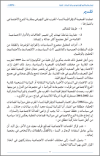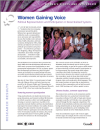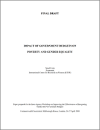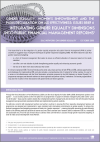FOUND 66
Training module produced in the context of the Local Level GRB programme in Morocco.
Decentralization has sometimes been presented as a magic bullet for both development and democracy.
Since the start of the COVID-19 pandemic, almost USD 16 trillion has been pumped into the global economy, and governments are now rolling out second and third ph
Paper discussing the definition and measurement of Sustainable Development Goal (SDG) Indicator 5.c.1. (reclassified to Tier II) and comparing Indicator 5.c.1 with other SDG fiscal indicators.
The following report, published by The Nordic Council of Ministers, is part of a Nordic cooperation project that strives to contribute to the integration of a gender and equality perspective into Nordic financial policy.
This paper provides guidance on how to make Public Finance Management (PFM) reforms gender responsive. It presents an overview of PFM reforms and explains how and why they are important to the achievement of gender equality outcomes.
In this paper, Simel Esim (2000) focuses on expenditure and revenue instruments of fiscal policy as strategic entry points for engendering macroeconomics. The paper also includes a discussion of the potential implications of monetary policy and overall fiscal stance on poverty and gender equality.
This paper by Simel Esim (2000) explores the revenue side of gender budgeting. Esim also discusses policies and suggests strategies for gender-sensitive budgeting.
This Issues Brief published by the DAC NETWORK on Gender Equality in October 2010 is on the integration of a gender equality perspective into public financial management (PFM) in partner countries. It suggests ways of using the techniques of gender-responsive budgeting (GRB).






